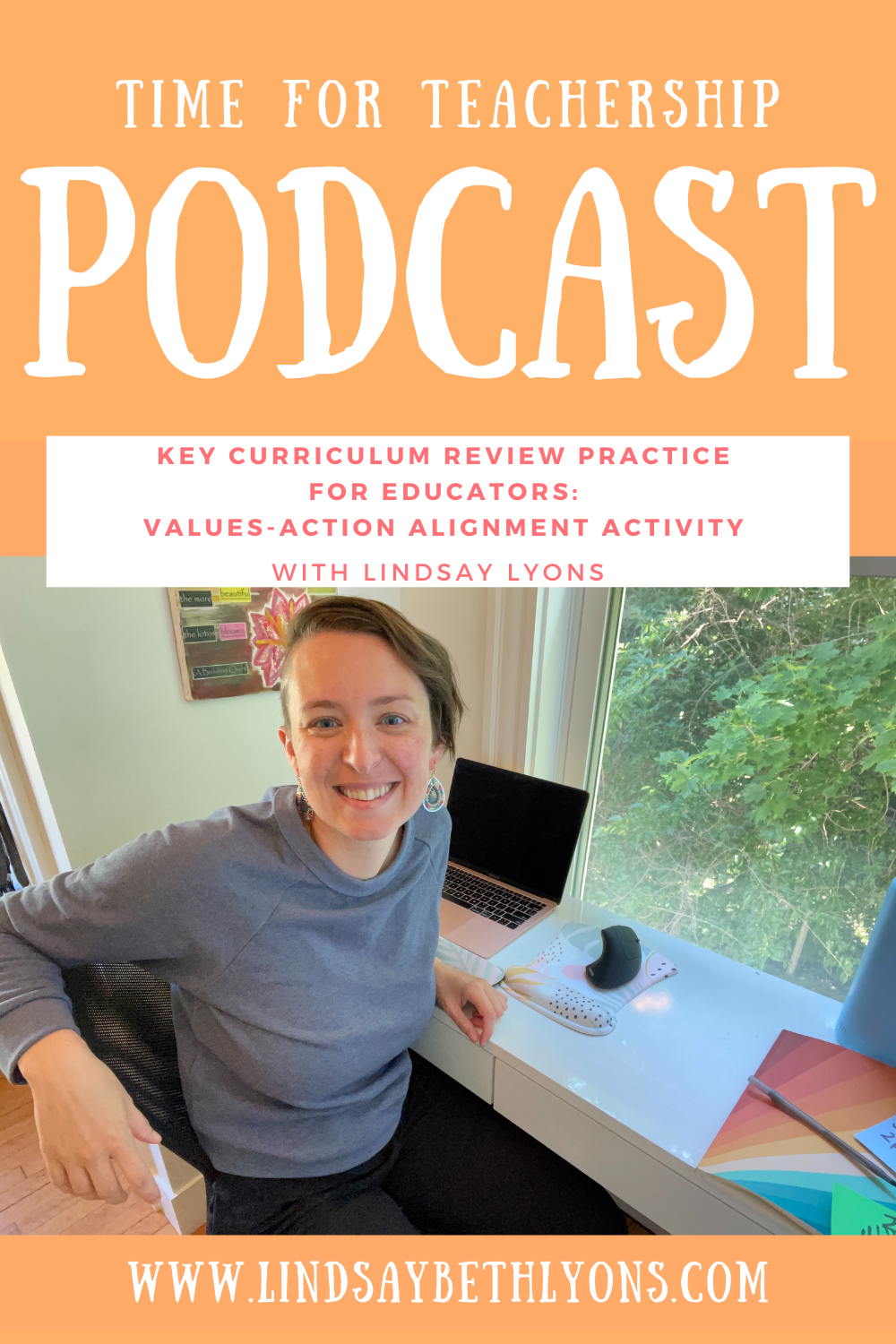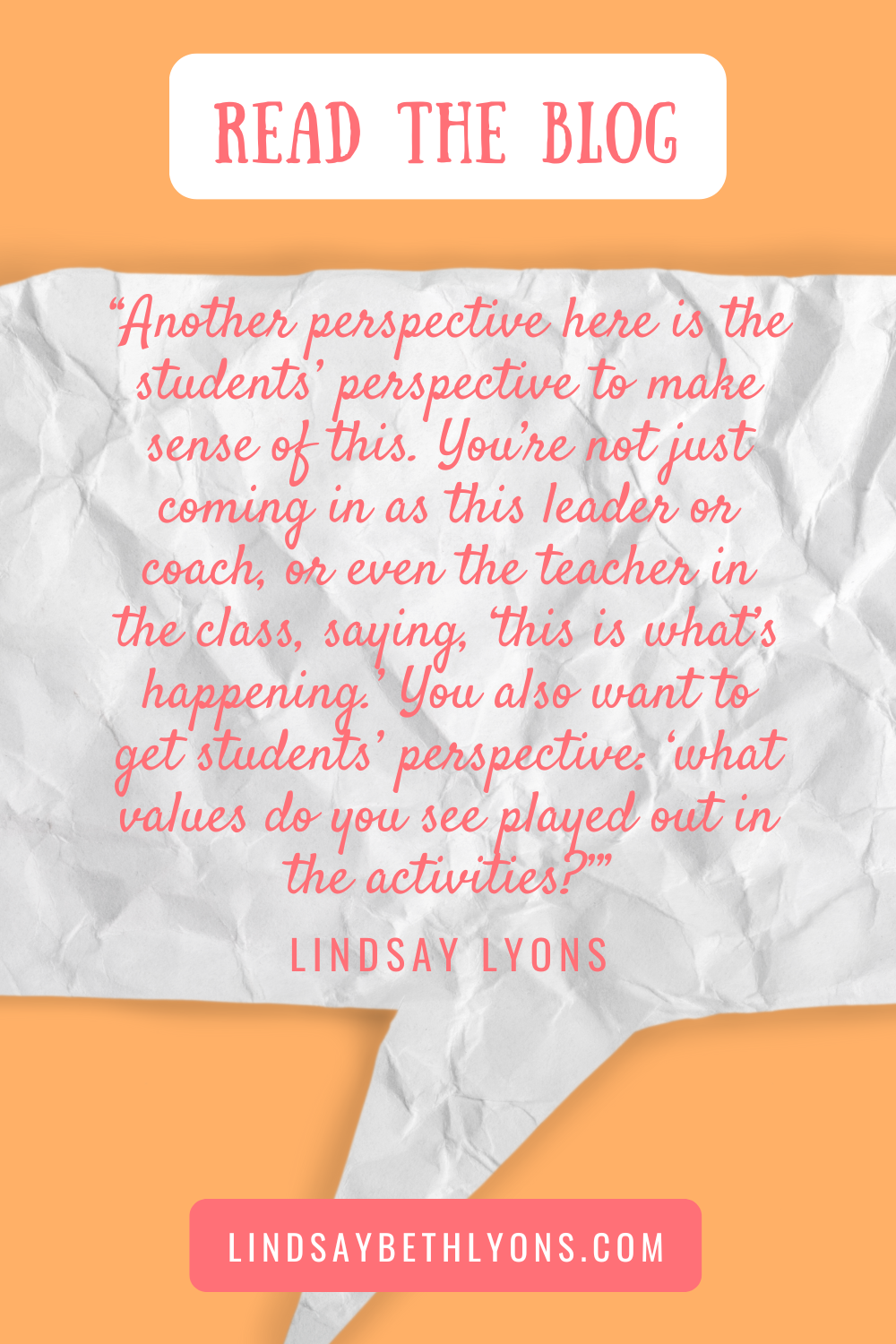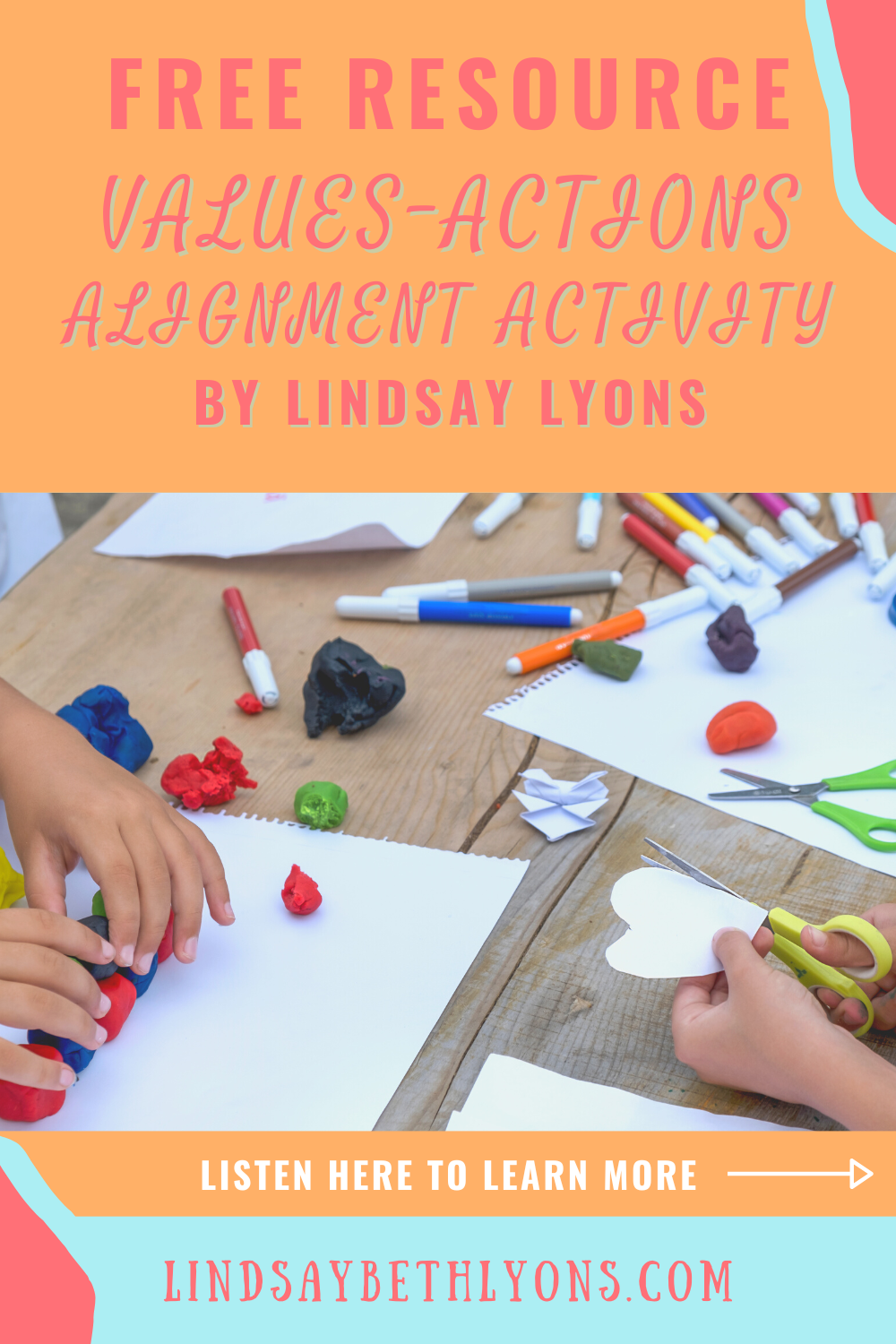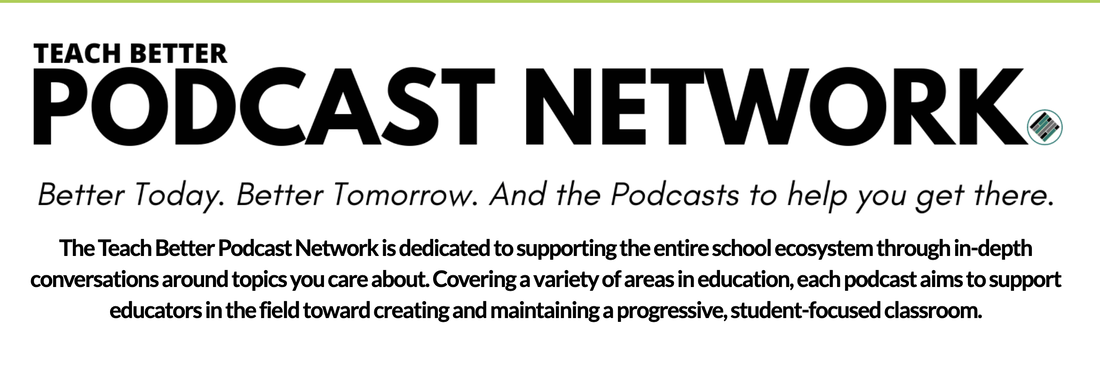|
Listen to the episode by clicking the link to your preferred podcast platform below: Each educator has their own personal values. And every class, school, or district has them too. Some of these values are deeply integrated into classroom curriculum while others are placeholders on the website. No matter where you are on this spectrum, we can all agree that there needs to be alignment between values—what we say we care about—and what we actually do. For this reason, educators can take some time to complete a values-action alignment activity to take stock of where they are and how they can improve. I covered this practice in-depth on episode 92 of the Time for Teachership podcast, so you can listen to it as well! Step 1: Decide your values The first step to align values with action is to actually know what your values are. Think through these questions:
Step 2: Values-action curriculum alignment Once you have identified the values that are important in your setting, it’s time to align them directly with curriculum content and activities. Take an inventory of everything that’s going on in your setting—activities, curriculum, projects, etc. You can do this by engaging various stakeholders including students, other teachers and colleagues, and the curriculum plan. Once you have a scope of the content and curriculum, assign one of the values to each item. You can do this by creating a document or log of each item and it’s assigned value. Step 3: What is success? After aligning your values and actions, zoom out and ask: what does success look like? What makes the curriculum successful can be divided into a few different parts:
Step 4: Design with values in mind After going through this exercise, you can continue the process by asking one simple question for every decision: what values are prioritized here? Make it an ongoing process by writing the question on the top of every agenda or curriculum plan so that your values are visible and obviously aligned with each task and item. And, in all of this, consider the process. It’s not just about the end product, but how we got there. So, who’s involved? Does everyone get a voice? Are we asking the right questions? Commit to the process and don’t try to rush through this practice. --- If you want to go even deeper into this practice, listen to episode 92 of the Time for Teachership podcast. This simple activity will take some time, but it will help you better align your values and actions, which positively impacts your class and your ability to support students. Quotes:
0 Comments
Leave a Reply. |
Details
For transcripts of episodes (and the option to search for terms in transcripts), click here!
Time for Teachership is now a proud member of the...AuthorLindsay Lyons (she/her) is an educational justice coach who works with teachers and school leaders to inspire educational innovation for racial and gender justice, design curricula grounded in student voice, and build capacity for shared leadership. Lindsay taught in NYC public schools, holds a PhD in Leadership and Change, and is the founder of the educational blog and podcast, Time for Teachership. Archives
May 2024
Categories |




 RSS Feed
RSS Feed